
Caffeine is a central nervous system (CNS) stimulant of the methylxanthine class. It is mainly used as a eugeroic (wakefulness promoter) or as a mild cognitive enhancer to increase alertness and attentional performance. Caffeine acts by blocking binding of adenosine to the adenosine A1 receptor, which enhances release of the neurotransmitter acetylcholine. Caffeine has a three-dimensional structure similar to that of adenosine, which allows it to bind and block its receptors. Caffeine also increases cyclic AMP levels through nonselective inhibition of phosphodiesterase.

Theobromine, also known as xantheose, is the principal alkaloid of Theobroma cacao. Theobromine is slightly water-soluble (330 mg/L) with a bitter taste. In industry, theobromine is used as an additive and precursor to some cosmetics. It is found in chocolate, as well as in a number of other foods, including the leaves of the tea plant, and the kola nut. It is a white or colourless solid, but commercial samples can appear yellowish.

Xanthine is a purine base found in most human body tissues and fluids, as well as in other organisms. Several stimulants are derived from xanthine, including caffeine, theophylline, and theobromine.

Red Bull is a brand of energy drinks created and owned by the Austrian company Red Bull GmbH. With a market share of 43%, it is the most popular energy drink brand as of 2020, and the third most valuable soft drink brand, behind Coca-Cola and Pepsi. Sinсe its launch in 1987, more than 100 billion cans of Red Bull have been sold worldwide, including over 11.5 billion in 2022.

An energy drink is a type of drink containing stimulant compounds, usually caffeine, which is marketed as providing mental and physical stimulation. They may or may not be carbonated and may also contain sugar, other sweeteners, or herbal extracts, among numerous possible ingredients.

Sodium benzoate also known as benzoate of soda is the sodium salt of benzoic acid, widely used as a food preservative (with an E number of E211) and a pickling agent. It appears as a white crystalline chemical with the formula C6H5COONa.
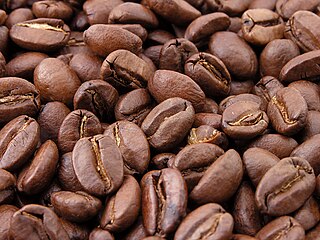
A coffee bean is a fruit from the Coffea plant and the source for coffee. It is the pip inside the red or purple fruit. This fruit is often referred to as a coffee cherry, and like the cherry, it is a stone fruit. Even though the coffee beans are not technically beans, they are referred to as such because of their resemblance to true beans. The fruits most commonly contain two stones with their flat sides together. A small percentage of cherries contain a single seed, instead of the usual two, called a "peaberry". The peaberry occurs only between 10% and 15% of the time, and it is a fairly common belief that they have more flavour than normal coffee beans. Like Brazil nuts and white rice, coffee beans consist mostly of endosperm.

Caffeine dependence is the condition of having a substance dependence on caffeine, a commonplace central nervous system stimulant drug which occurs naturally in coffee, tea, yerba mate, cocoa, and other plants. Caffeine is one of the most common additives in many consumer products, including pills and beverages such as caffeinated alcoholic beverages, energy drinks, and colas. Studies have found that 89 percent of adults in the U.S. consume on average 200 mg of caffeine daily. Cultural influence is a large factor in deciding how and what way caffeine is used. For example, in African, Asian and Pacific countries, tea is the most popular form of caffeine, while in Europe and North America, coffee is the mainstream choice.

Nutrition and pregnancy refers to the nutrient intake, and dietary planning that is undertaken before, during and after pregnancy. Nutrition of the fetus begins at conception. For this reason, the nutrition of the mother is important from before conception as well as throughout pregnancy and breastfeeding. An ever-increasing number of studies have shown that the nutrition of the mother will have an effect on the child, up to and including the risk for cancer, cardiovascular disease, hypertension and diabetes throughout life.
In chemical nomenclature, the IUPAC nomenclature of inorganic chemistry is a systematic method of naming inorganic chemical compounds, as recommended by the International Union of Pure and Applied Chemistry (IUPAC). It is published in Nomenclature of Inorganic Chemistry. Ideally, every inorganic compound should have a name from which an unambiguous formula can be determined. There is also an IUPAC nomenclature of organic chemistry.

Paraxanthine, also known as 1,7-dimethylxanthine, is a metabolite of theophylline and theobromine, two well-known stimulants found in coffee, tea, and chocolate. It is a member of the xanthine family of alkaloids, which includes theophylline, theobromine and caffeine.
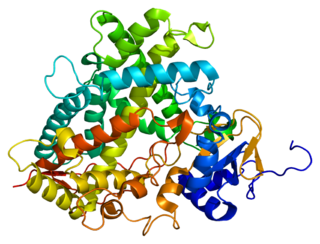
Cytochrome P450 1A2, a member of the cytochrome P450 mixed-function oxidase system, is involved in the metabolism of xenobiotics in the human body. In humans, the CYP1A2 enzyme is encoded by the CYP1A2 gene.
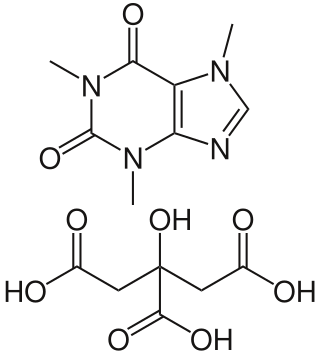
Caffeine citrate, sold under the brand name Cafcit among others, is a medication used to treat a lack of breathing in premature babies. Specifically it is given to babies who are born at less than 35 weeks or weigh less than 2 kilograms (4.4 lb) once other causes are ruled out. It is given by mouth or slow injection into a vein.

Ilex guayusa is a species of tree of the holly genus, native to the Amazon Rainforest. One of four known caffeinated holly trees, the leaves of the guayusa tree are harvested fresh and brewed like a tea for their stimulative effects.

5-hour Energy is an American-made "energy shot" manufactured by Living Essentials LLC. The company was founded by CEO Manoj Bhargava and launched in 2004.
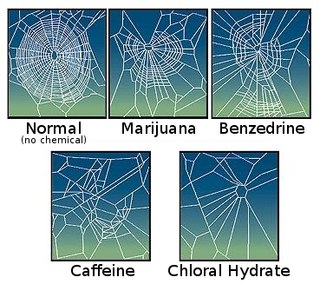
Psychoactive drugs, such as caffeine, amphetamine, mescaline, lysergic acid diethylamide (LSD), cannabis, chloral hydrate, theophylline, IBMX and others, can have strong effects on certain animals. It is believed that plants developed caffeine as a chemical defense against insects.
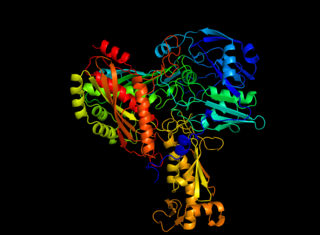
Caffeine dehydrogenase, commonly referred to in scientific literature as caffeine oxidase, is an enzyme with the systematic name caffeine:ubiquinone oxidoreductase. The enzyme is most well known for its ability to directly oxidize caffeine, a type of methylxanthine, to trimethyluric acid. Caffeine dehydrogenase can be found in bacterium Pseudomonas sp. CBB1 and in several species within the genera Alcaligenes, Rhodococcus, and Klebsiella.
The molecular formula C8H10N4O3 may refer to:
Trimethyluric acid may refer to:

7-Methylxanthine (7-MX), also known as heteroxanthine, is an active metabolite of caffeine (1,3,7-trimethylxanthine) and theobromine (3,7-dimethylxanthine). It is a non-selective antagonist of the adenosine receptors. The compound may slow the progression of myopia (nearsightedness). It is under investigation for this purpose in children with myopia.
















